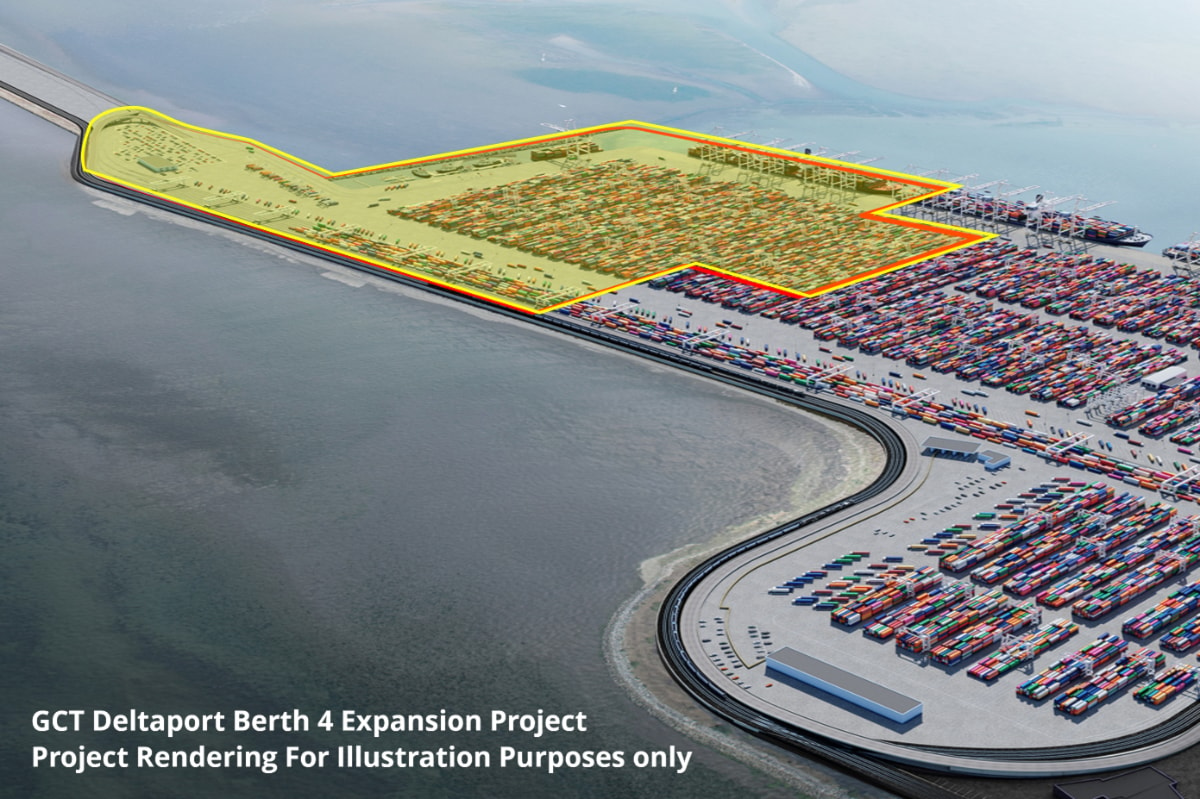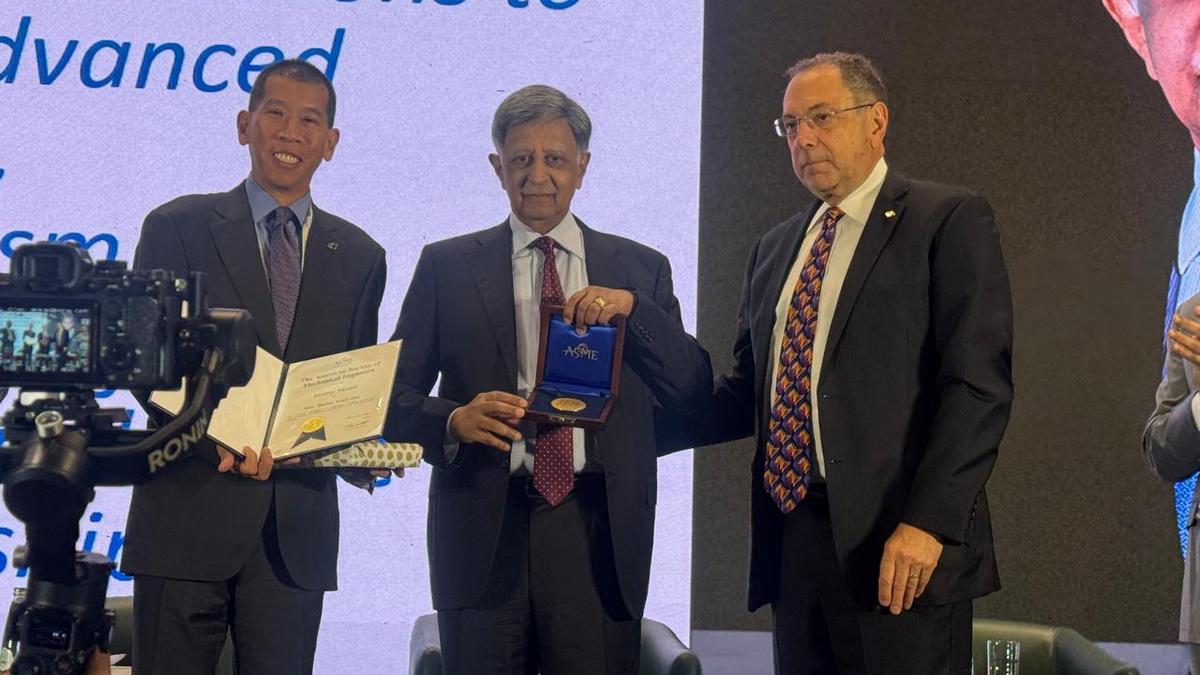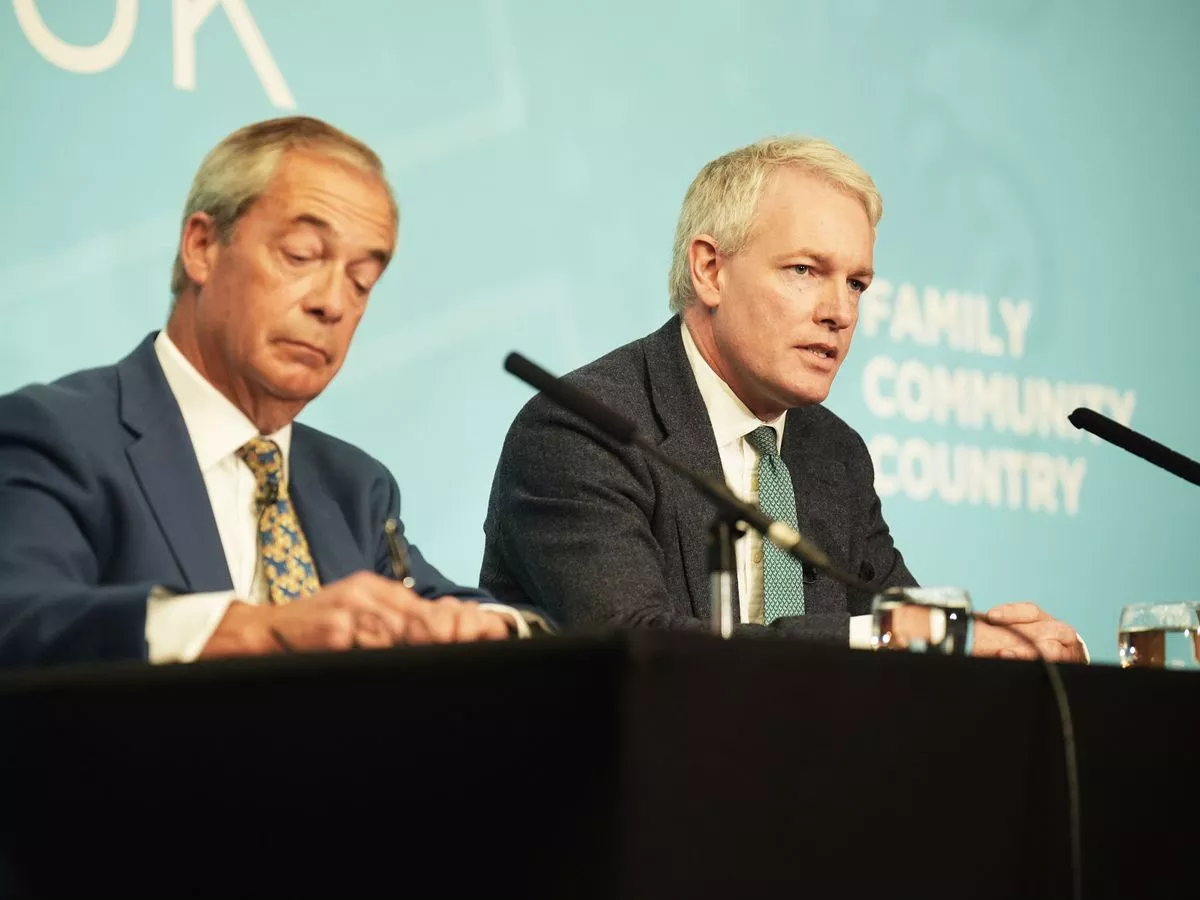
The operator of Canada’s largest container terminal container port is asking the federal government to fast-track approval of the company’s planned expansion of the facility.
Global Container Terminals (GCT) announced on Sept. 12 it had submitted its Deltaport Berth 4 (DP4) expansion project to the new Major Project Office, and is urging the Government of Canada to place DP4 on the Projects of National Interest List, citing its “critical role in strengthening Canada’s supply chains, driving private-sector investment, and securing the country’s position as a global trade leader.”
The proposed DP4 project which would see a fourth berth added to the current GCT-operated facility in Delta, B.C. and include an expansion of the intermodal rail yard along the causeway and dredging to provide safe access for ships.
According to the DP4 project page on the Government of Canada’s website, the additional land-based container storage and handling facilities would allow GTC Deltaport to handle the equivalent of an additional two million 20-foot long storage containers per year, a measure referred to as TEUs.
The DP4 expansion is being proposed by GTC without involvement from the Vancouver Fraser Port Authority, whose three-berth Roberts Bank Terminal 2 Project (RBT2), a three-berth expansion that would transform more than 1.7 square kilometres of subtidal and tidal waters into a facility capable of handling 260 ships and more than 2.4 million containers a year, increasing the port’s capacity by 50 per cent.
That project would also involve widening the existing causeway to accommodate additional rail infrastructure, adding road connections and utilities, and expanding the existing tug-boat basin.
The Major Projects Office, which was announced during the 2025 federal election campaign by Prime Minister Mark Carney, launched in August and is meant to fast-track “nation-building projects by streamlining regulatory assessment and approvals and helping to structure financing, in close partnership with provinces, territories, Indigenous Peoples, and private investors,” according to a release from the Prime Minister’s Office.
On Sept. 11, Carney announced the first five projects to be reviewed by the Major Projects Office, including LNG Canada’s Phase 2 in Kitimat and expansion of the Red Chris Mine located in the Stikine Country of northwestern B.C.
In its announcement last week, GTC commended Carney for his pro-growth economic policies and commitment to accelerating approvals for nationally significant infrastructure, noting DP4 represents exactly the kind of strategic, privately-funded project that aligns with the federal government’s vision for economic competitiveness and clean growth.
“Prime Minister Carney has set a clear direction for Canada: invest in infrastructure that unlocks private capital, drives innovation and positions our country for long-term success,” Eric Waltz, president and CEO of Global Container Terminals, said in a press release.
“Adding DP4 to the Projects of National Interest List would demonstrate federal leadership and provide the certainty we need to advance one of the most important private-sector-led trade infrastructure investments in Canada.”
The company says the DP4 expansion is designed to incrementally increase container capacity while minimizing environmental impacts and maximizing economic benefits, in part by supporting the diversification of Canada’s trade partners and trade with Asia.
In addition to the boost in capacity, GCT says DP4 would create over 10,000 jobs during construction and operations, contribute billions of dollars to GDP growth while strengthening national supply chain resilience, and deliver leading-edge environmental performance through electrification and “Net-Zero” commitment, the deployment of shore power, and building of ecological habitat offsets.
All of which, the company says, directly supports Carney’s national priorities, including trade expansion, supply chain security, climate-conscious growth, and attracting private-sector investment — in GCT’s case, Canadian pension funds.
“This government has made it clear that Canada must compete to win global investment,” Waltz said. “DP4 represents exactly the type of high-impact, low-risk infrastructure project the prime minister has called for: private sector investment, partnering with public sector port authority, environmentally responsible, and nationally strategic.”
The company says that placing DP4 on the Projects of National Interest List — which would automatically grant it federal regulatory approvals, subject to some conditions — would ensure a co-ordinated and efficient process and send a strong signal to global investors that Canada is a safe harbour for investment and committed to building the infrastructure needed to drive long-term prosperity.
“Canada’s position as a Pacific gateway is critical to our economy and our trading relationships,” Waltz said. “Now is the time for federal leadership to ensure the country has the infrastructure it needs to compete globally. Adding DP4 to the list is the right step forward.”
DP4 is currently undergoing an impact assessment by an independent review panel at the behest of the federal minister of environment and climate change. The panel is expected to submit its report to the minister by Feb. 6, 2028, with a decision on whether to approve the project anticipated on April 20, 2029.
Meanwhile, RBT2 is in the procurement phase after receiving federal and provincial approval in 2023.
In 2024, the port authority submitted a Species at Risk Act-compliant Fisheries Act Authorization application to Fisheries and Oceans Canada, with a joint commitment from government and regulators that a decision will come no later than October of 2026.
In July, the Vancouver Fraser Port Authority issued a request for qualifications for a construction team to plan and build the landmass and wharf component of the project. Interested teams must provide an interim submission confirming their interest by Sept. 18, and submit details of their qualifications by Sept. 25.
The port authority will shortlist three teams this fall, who will then be invited to submit their proposals.
Construction mobilization and early works are expected to occur in 2027, with major land reclamation works expected to begin in 2028.
Operations at Roberts Bank Terminal 2 are expected to begin in the mid-2030s.
— with files from Lauren Collins



